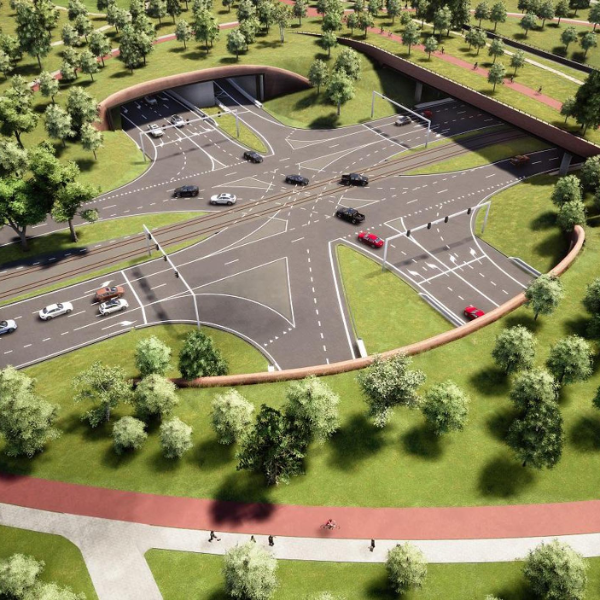Oosterweel Link

Oosterweel Link
In Antwerp, one of Europe's largest infrastructure projects at the moment is being developed: the Oosterweel connection. The Oosterweel connection involves closing the Antwerp Ring and improving the flow and integration of the existing Ring. It is an important part of the Antwerp Master Plan 2020, which provides for additional road infrastructure, public transport projects, extra cycle paths and water-related infrastructure works.
As early as 2012, Witteveen+Bos, together with Sweco, formerly Grontmij, (linked in at temporary trading association named THV ROTS), started studies into the realisation of the Oosterweel connection on the Rechteroever (Right Bank) on behalf of Beheersmaatschappij Antwerpen Mobiel (BAM N.V., rebranded as Lantis in 2019). The contract for the Linkeroever (Left Bank) was added in June 2015. Witteveen+Bos and Sweco have set up THV ATLAS for this purpose. Due to the combination of assignments, Witteveen+Bos and Sweco are now responsible for the complete study into the closure of the Antwerp Ring Road.
Right bank
The large-scale project on the right bank contains various challenges, including the Oosterweelknoop: the connection between the Scheldt tunnel and the stacked tunnel under the docks and the Albert Canal (the canal tunnel), with access and exit ramps for the port and the north of Antwerp. The design of the canal tunnel is also part of the assignment: a stacked tunnel with two lanes of traffic twice from the Oosterweelknoop to the R1.
Left bank
Finally, the R1 will also be rebuilt, whereby the current Merksem viaduct will disappear and the R1 will partially go underground at the passage of the Albert Canal with a second stacked tunnel and in an open trench. For the Left Bank, the project consists of an immersed tunnel under the Scheldt and the reconstruction of the two traffic junctions in the E34 and E17, including various smaller structures in this project area.
Expertises
A lot has to be done in a very tight planning. The project involves collaboration with both Dutch and Belgian colleagues from Witteveen+Bos and Sweco. In addition to the combination of cultures, the combination of the various professional disciplines is indispensable in both projects. A wide range of expertise is deployed, such as geotechnics and geohydrology, tunnel expertise, landscape integration and ecology, tunnel safety, hydraulic engineering works and traffic and tunnel installations.
Stacked cut and cover tunnel
Already in one of the first brainstorming sessions, during which optimisations of the design were sought, the idea of a stacked cut and cover tunnel arose instead of the originally proposed immersed tunnels. This solution saves the client hundreds of millions of euros in savings and also makes it possible to realise a sustainable design within the requirements set by the environment.

Landscaping plan
The Oosterweel Link is a complex and integrated inner-city infrastructure task. The far-reaching changes to the infrastructure, also mean something for the landscape integration and layout.. Older parts of the city will be linked to one another in a qualitatively positive way. The public spaces above the new tunnels and along the sunken sections have been designed in such a way as to give the city of Antwerp a qualitative boost. This will result in new urban connections for slow traffic in spacious park areas designed for inner-city recreation.
On behalf of Lantis, Witteveen+Bos advised on the landscaping plan for the outdoor space on the tunnel roofs and along the trench structures. This landscape plan was included in the environmental permit application. In this project, specialists from various disciplines, such as geotechnics, civil engineering, hydraulic engineering, traffic, ecology and construction, worked closely together.
More information?




